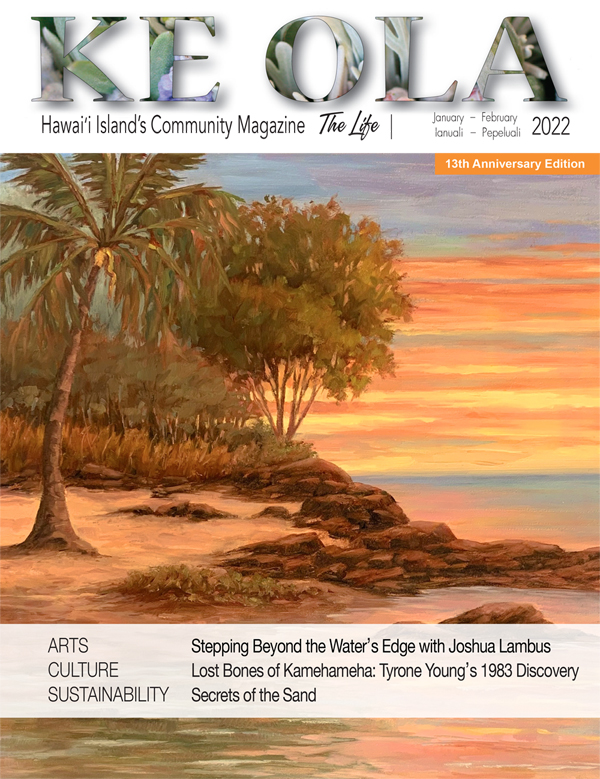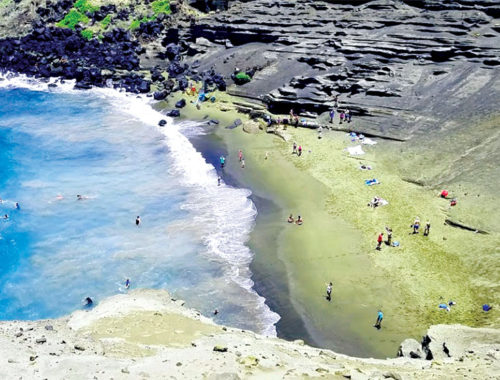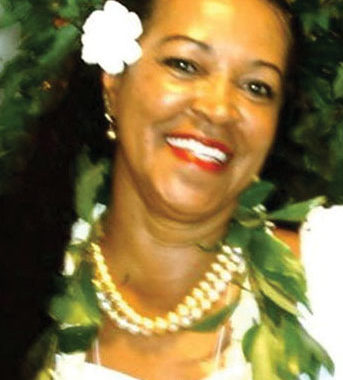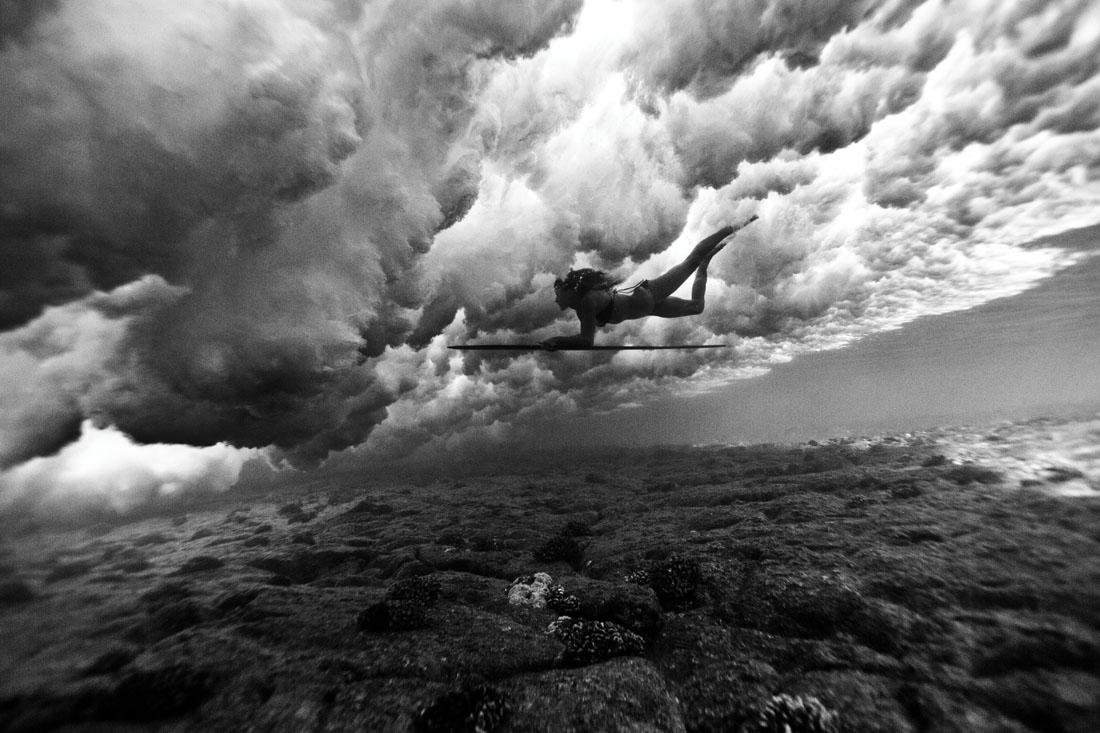
Stepping Beyond the Water’s Edge with Adventurer and Artist Joshua Lambus
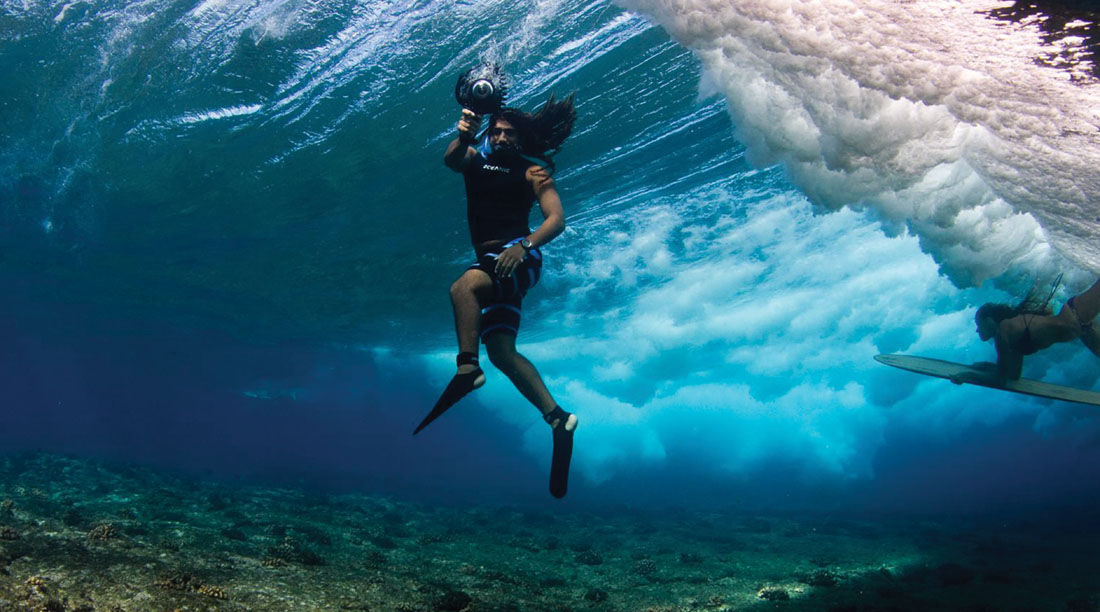
By Sara Stover
Joshua Lambus is literally paddling through a sea of foam noodles. Clinging to these bright green, blue, and pink cylinders are visitors of all ages, many of whom have never been snorkeling before today. As he scans Kealakekua Bay, Joshua is delighted to see that the very snorkelers who were terrified to leave the beach earlier that morning are now bobbing along, smiling.
The sight calls to mind the first time he ventured beyond the water’s edge himself and discovered a new world below the surface.
“That first moment I dipped my face in the water, I realized there was a whole world to explore that I barely knew existed. It changed the direction of my life and led to some insane experiences,” Joshua recalls. “I want other people to experience these things. It’s why I became a dive master and adventure guide!”
Originally from Houston, Joshua first visited Hawai‘i Island when he was only 17 years old. It was on that trip that his uncle, a Hawai‘i resident and adventure-seeker, first introduced Joshua to the ocean and taught him to surf.
“I was hooked!” he admits, so after graduating from high school in 2003, Joshua moved to Kona and has called Hawai‘i home ever since.
He began his life on the island as a chef at the original Splashers Grill. From the kitchen’s window, Joshua would gaze out at the ocean and watch dolphins playing in the waves. Unable to resist the pull to life offshore, he started scuba diving for fun.
Unsatisfied with simply trying something out, Joshua is intent on immersing himself so deeply into a subject that he can teach it. It’s this passion for sharing his knowledge that led Joshua to become a divemaster at Big Island Divers, with an emphasis on daily blackwater dives.
Blackwater diving is a night scuba experience that takes divers miles offshore, where they essentially hang suspended from a tether, over thousands of feet of dark water, just for the chance to spot pelagic (open ocean) animals floating by.
Joshua’s years of experience in Hawai‘i’s waters, caves, and canyons ultimately led him to seek a deeper connection with life’s great unknowns, and capture it all with his camera. Although his commitment to photography began with 35mm and medium format film, Joshua was soon diving deeper into the ocean and into the world of digital photography.

The Art of Capturing Blackwater on Camera
“In the 1970s, Chris Newbert was shooting photos while doing blackwater dives, but with film. When I got into blackwater diving two to three times a week and photographing plankton at night, I was shooting with a digital SLR camera, which enabled me to be more prolific, capturing a lot more images of these animals,” Joshua affirms.
As his images of glowing jellyfish, transparent plankton, and other gelatinous creatures that resemble beings from another universe began to make the rounds, they garnered popularity. It’s not just what Joshua photographs—it’s how he captures these images—that has attracted the likes of the Smithsonian National Museum of Natural History in Washington, DC, and other museums where his work is on display.
“I situate myself a little far forward in the current so I can wait for the animals to drift by. When I do see something, I can start drifting with it,” says Joshua, who then has one or two chances to photograph these pelagic animals before they swim off through water as dark and disorienting as outer space.
During the day, pelagic animals live in complete darkness. By night, the light-sensitive animals make massive vertical migrations to the ocean’s surface.
“It’s actually the largest migration of any group of animals on the planet! Some are coming up to feed because there’s a more nutrient-dense layer of water at the surface,” says Joshua, about their behavior. “Some are even coming up to respirate—they absorb oxygen, go back down, and use it during the day.”
Through photographing pelagic animals, Joshua is able to introduce others to a world of translucent and reflective creatures most have never seen before. His personal favorites, however, are those that make him question things, including a photograph he took in 2008 of an octopus that appears to be holding two tentacles.
“It took me three years to find someone who could tell me what they were!” Joshua says, explaining that most likely the octopus tore off the tentacles from a Portuguese man oʻ war, and is actually using them to defend itself against potential predators.

The Edge Is Just the Beginning
Inspired to offer everyone the opportunity to explore the underwater world through his lens, Joshua attempted to show his work at local galleries. What he encountered was a narrow concept of photography.
Standing at the proverbial edge, Joshua was faced with the choice to back away, wait, or find a new way to share his art. Deciding to turn the edge into an adventure, Joshua opened his own kiosk in Kona, and eventually a few art galleries, all which met with tremendous success.
“I had an art gallery on Ali‘i Drive for eight years,” Joshua says. “But I found that I didn’t do well sitting inside all day. So now I sell the images I photograph on my website, and work as a divemaster and tour guide.”
It is in this role that Joshua is able to live his personal motto: The edge is just the beginning!
This belief empowers him to face his fears, be it diving with Laverne, Kona’s resident tiger shark, or free diving—first down 25 feet to the “ALOHA” sign at the bottom of Honaunau Bay, then down to depths of 50 and eventually, more than 250 feet. In turn, Joshua shares this belief with others who have never been in the ocean.
“They get to the water’s edge and want to turn around. That, however, is where the adventure starts!” says Joshua of his job helping others step over the edge, past their fear. “I like to shake people up and love watching people surprise themselves. Some have even gone on to become divemasters themselves!”
A Conduit for Culture and Conservation
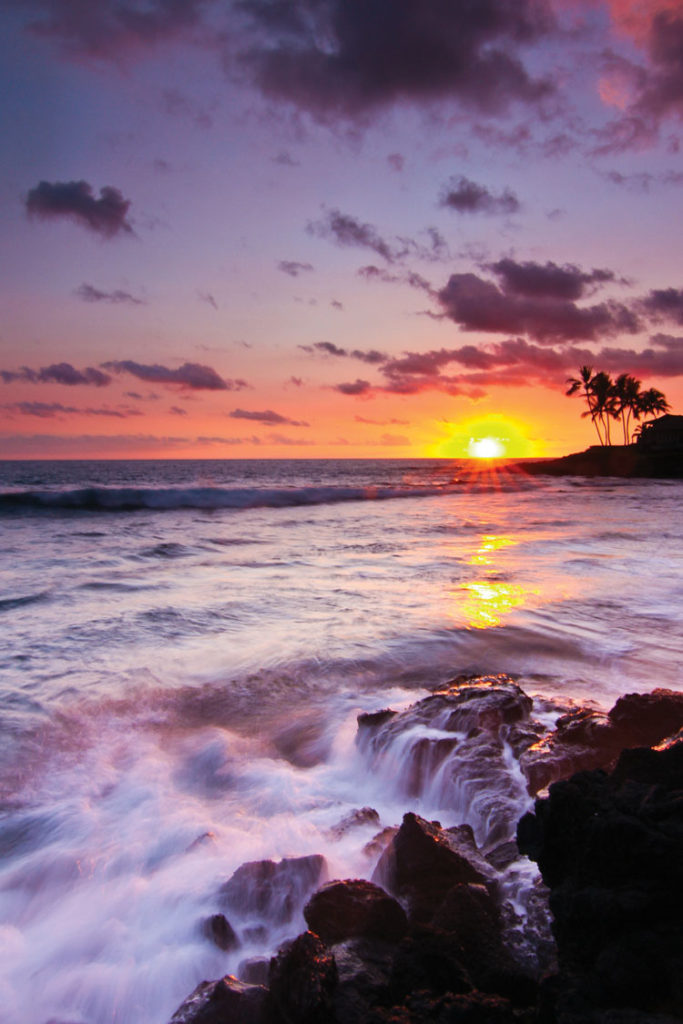
Sunset-infused skies create a stunning contrast against misty waves lapping the sand. A monk seal peers curiously into his lens. Joshua captures each image with palpable intention.
“When I take these photographs, I can show people things they’ve never considered,” he says, pointing out that the ocean produces more than half of the planet’s oxygen. “Hopefully they realize that there is something very important for us to conserve!”
While Joshua’s art assuredly speaks for itself, he also recognizes the power that an entire community of artists can harness. Through putting on art shows, he’s been afforded the chance to help nonprofits like Kona’s Surfrider Foundation and the Hawai‘i Wildlife Fund protect the world’s ocean and beaches, and conserve Hawai‘iʻs wildlife.
“To get into the shows, we ask for a donation that goes toward a nonprofit. The events help lesser-known artists gain exposure!” he exclaims.
“I feel a responsibility as a tour guide to be a conduit for Hawaiian culture,” Joshua says of his strong sense of responsibility that extends beyond the art community to the island’s culture. “To bridge this gap between the mainland perspective on Hawai‘i requires a deeper understanding, so I’ve reached out to kumu and kūpuna on the island who can teach me.”
This effort has allowed him to educate others about sites long misunderstood, including the red rock where High Chiefess Kama‘eokalani is buried. “Because of that, I’m able to share the truth about the coup d’état staged against Queen Lili‘uokalani.”
A Hole in the Clouds
Today, Joshua’s art has been published in National Geographic, as well as many other magazines, periodicals, and films. His extensive knowledge of the Kona coast also makes him an imperative resource for underwater productions, including projects for the Discovery and Travel Channels.
As exciting as that recognition is, the moments that truly take his breath away are those that challenge Joshua’s perspective.
“I was on a tracking [sky] dive, which means that while freefalling, I was moving horizontally and chasing a friend who jumped before me,” he says of a particularly transformative skydiving experience. “There was a hole in the clouds and my friend got there first, so we dove down together!” Joshua says, recalling how the moment left him asking, “Did I just chase my friend through a hole in the clouds?!”
Even after 5,000 dives, it’s the same liberating rush he gets when plunging into unknown depths of blackwater.
“I’m on a mission to learn as much as possible about life, myself, the ocean, the land, the people and culture of this island, and the ways I can serve my community,” Joshua reflects.
From black waters to holes in clouds, Joshua’s epic experiences serve as proof that anything is possible if you commit.
“You only live once, but if you do it right, once is enough,” Joshua says, quoting Mae West. Undoubtedly, it’s a perspective that he is imparting to all who know him. ❖
All photos courtesy of Joshua Lambus
For more information: jlambus.com
